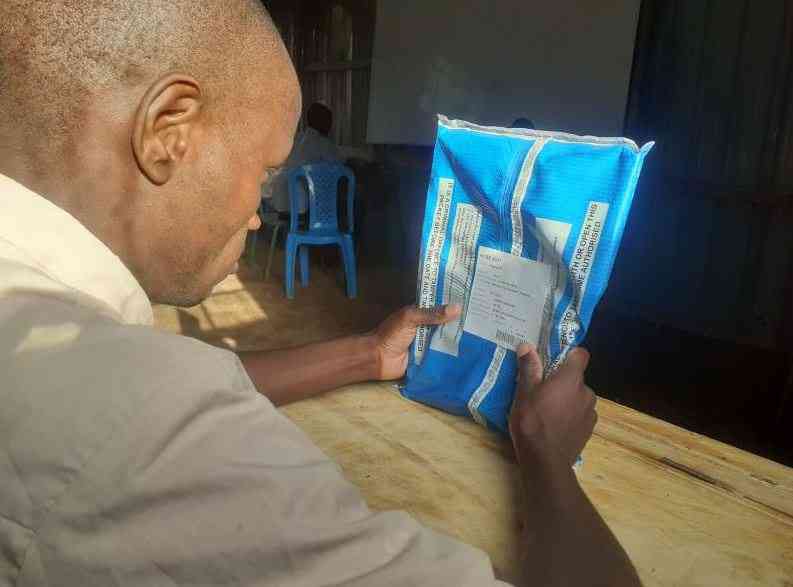
The number of super-rich Kenyans shot up to 27,473 last year even as the Covid-19 pandemic widened the chasm between the rich and the poor, a new wealth report shows.
The report by the Swiss-based financial conglomerate Credit Suisse shows that the percentage of adult Kenyans with over $1 million (Sh108 million) increased to 0.1 per cent as some individuals defied the Covid-19 odds to multiply their wealth amidst an economic downturn.
The fraction of Kenya’s multi-millionaires ($1 million and above) did not feature in the 2019 report as it was less than 0.1 per cent.
This means the number of super-rich Kenyans increased at a time when two million Kenyans were plunged into poverty, according to a World Bank report, which attributed the increase in destitution to the adverse effects of the Covid-19.
The Global Wealth Report 2021 estimated Kenya’s adult population last year at 27.47 million, with nearly everyone (98 per cent) valued at less than Sh100,000.
Stock market
The increase in the number of high-net-worth individuals (HNWIs) was despite a bearish stock market which saw investors at the Nairobi Securities Exchange (NSE) lose billions of shillings in paper wealth.
Kenya was among the countries where share prices declined by more than 10 per cent. Others countries that experienced decline include Israel, Spain, Singapore, Greece, Austria, Chile, Egypt, and Colombia.
“Severe pandemic upheaval and post-Brexit uncertainty are not an attractive combination for investors,” read the report in part.
Share prices at the NSE, the report showed, declined by 15.5 per cent as the stock market was jolted by a pandemic that saw trading at the bourse temporarily suspended.
The rich seem to have moved most of their wealth into safe assets such as Treasury Bonds and assets-denominated in US dollars where their money grew even as Covid-19 decimated lives and livelihoods.
The number of HNWIs in the report, however, contrasts sharply with that which was done jointly by Knight Frank and Stanbic Bank. This Knight Frank-Stanbic Bank report estimated that there were only 3,323 Kenyans worth $1 million and above, a drop of 21.5 per cent compared to 4,235 in 2019.
The report shows that most of the country’s super-rich have put their wealth in real estate, with a few being stashed in government securities.
Among the African countries surveyed, Kenya had the third-highest number of HNWIs behind South Africa and Egypt, The Global Wealth Report 2021 showed.
However, the gap between the haves and have-nots widened with the Gini coefficient, an index that measures inequality of a society (zero per cent indicates perfect equality while 100 per cent the worst inequality) deteriorating to 82.2 per cent from 74.5 per cent in the previous year. In 2019, there were 228,456 Kenyans valued at between Sh10 million and Sh107 million ($100,000-$1 million).
This has increased to 412,095. Africa’s richest economy, Nigeria, does not feature because the fraction of HNWIs is below 0.1 per cent.
A lot of Kenyans lost their jobs in 2020 after the State implemented safety and health protocols aimed at curbing the spread of Covid-19. According to the report, Switzerland has the highest percentage of high-net-worth individuals with 14.9 per cent of the adult population worth over Sh108 million.
Slovakia is a country where the gap between the rich and the poor is not wide with a Gini coefficient of 50.9 per cent. It is followed by Iceland, 50.9 per cent. The Bahamas, a prominent tax haven, is the most unequal society with a Gini coefficient of 91.4 per cent.
The rate at which Kenya minted millionaires between 2014 and 2019 was the fastest in the world, the wealth report by Knight Frank showed. They increased by 263 per cent between 2014 and 2019, beating even China.
 The Standard Group Plc is a multi-media organization with investments in media
platforms spanning newspaper print operations, television, radio broadcasting,
digital and online services. The Standard Group is recognized as a leading
multi-media house in Kenya with a key influence in matters of national and
international interest.
The Standard Group Plc is a multi-media organization with investments in media
platforms spanning newspaper print operations, television, radio broadcasting,
digital and online services. The Standard Group is recognized as a leading
multi-media house in Kenya with a key influence in matters of national and
international interest.
 The Standard Group Plc is a multi-media organization with investments in media
platforms spanning newspaper print operations, television, radio broadcasting,
digital and online services. The Standard Group is recognized as a leading
multi-media house in Kenya with a key influence in matters of national and
international interest.
The Standard Group Plc is a multi-media organization with investments in media
platforms spanning newspaper print operations, television, radio broadcasting,
digital and online services. The Standard Group is recognized as a leading
multi-media house in Kenya with a key influence in matters of national and
international interest.










